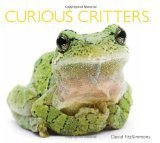Dawn Little's Blog, page 6
December 9, 2013
Remember the Ladies: 100 Great American Women by Cheryl Harness
Recommended Grades: 3-5
Cheryl Harness introduces readers to 100 illustrious American women, starting with the first known female born in America.
Lesson Idea:
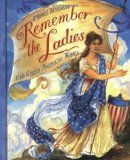

Mentor Text: Biographies: Read aloud Remember the Ladies: 100 Great American Women (or parts of it) and discuss the various accomplishments of the great women selected. Use as a model text for students to write mini-biographies on a group of people related to your curriculum (authors, characters in a book, historical or scientific figures, etc.).
(or parts of it) and discuss the various accomplishments of the great women selected. Use as a model text for students to write mini-biographies on a group of people related to your curriculum (authors, characters in a book, historical or scientific figures, etc.).
©2013 by Dawn Little for Picture This! Teaching with Picture Books. All Amazon links are affiliate links and may result in my receiving a small commission. This is at no additional cost to you.
Filed under: biographies, mentor texts, Remember the Ladies by Cheryl Harness, teaching with picture books, writers workshop Tagged: biography mentor text, mini-biographies, Remember the Ladies by Cheryl Harness, writers workshop

November 18, 2013
Curious Critters by David FitzSimmons
Recommended Grades: 3-5
Portraits of a range of remarkable, bizarre, and often amusing creatures commonly found throughout North America with information related to the reader told from their point of view!
Nonfiction Poetry Writing
Writer’s Workshop Mentor Text/Point of View: Read aloud Curious Critters and discuss how the author took true information and told it through poems. Each critter shares his story from his point of view using onomatopoeia and other poetic elements. Actual photographs of the animals complete the text. Provide time for students to write nonfiction poems about a topic. Encourage them to take/use photographs to go along with their poetry.
and discuss how the author took true information and told it through poems. Each critter shares his story from his point of view using onomatopoeia and other poetic elements. Actual photographs of the animals complete the text. Provide time for students to write nonfiction poems about a topic. Encourage them to take/use photographs to go along with their poetry.
©2013 by Dawn Little for Picture This! Teaching with Picture Books. All Amazon links are affiliate links and may result in my receiving a small commission. This is at no additional cost to you.
Filed under: Curious Critters, mentor texts, narrative nonfiction, nonfiction writing, Poetry, point of view, writers workshop Tagged: mentor texts, nonfiction writing, Poetry, point of view, writers workshop

November 11, 2013
Locomotive by Brian Floca
Recommended Grades: 3-5
It is the summer of 1869, and trains, crews, and family are traveling together, riding America’s first transcontinental railroad, still new, just built.
Lesson Idea:
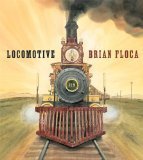

Informational Text/Narrative Nonfiction/Word Choice: Read aloud Locomotive and discuss the characteristics of narrative non-fiction. Demonstrate how the author uses word choice (onomatopoeia, specifically) to develop the story. How does the author’s choice of words (and the text features) help the reader to understand the text? Ask, how can you choose words to develop your nonfiction writing? Provide time for students to practice using onomatopoeia in their own informational writing.
and discuss the characteristics of narrative non-fiction. Demonstrate how the author uses word choice (onomatopoeia, specifically) to develop the story. How does the author’s choice of words (and the text features) help the reader to understand the text? Ask, how can you choose words to develop your nonfiction writing? Provide time for students to practice using onomatopoeia in their own informational writing.
©2013 by Dawn Little for Picture This! Teaching with Picture Books. All Amazon links are affiliate links and may result in my receiving a small commission. This is at no additional cost to you.
Filed under: Locomotive Tagged: informational writing, Locomotive by Brian Floca, narrative nonfiction, word choice

November 4, 2013
The Story of Fish and Snail by Deborah Freedman
Recommended Grades: K-2
Every day, Snail waits for Fish to come home with a new story. Today, Fish wants to show Snail in a new story. But, Snail wants to remain safely at home in the book he is in. What happens to the story when they disagree?
Lesson Idea:
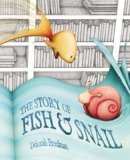

Mentor Text: Building Community/Theme: Read aloud The Story of Fish and Snail and discuss what it means to be a food friend. How was Fish a good friend? How was Snail a good friend? Or use the story when discussing themes of literature. What evidence can you find in the text to support the theme?Pair The Story of Fish and Snail
and discuss what it means to be a food friend. How was Fish a good friend? How was Snail a good friend? Or use the story when discussing themes of literature. What evidence can you find in the text to support the theme?Pair The Story of Fish and Snail with other books with the theme of friendship.
with other books with the theme of friendship.
©2013 by Dawn Little for Picture This! Teaching with Picture Books. All Amazon links are affiliate links and may result in my receiving a small commission. This is at no additional cost to you.
Filed under: building community, mentor texts, teaching with picture books, The Story of Fish and Snail, theme Tagged: building community, mentor text, The Story of Fish and Snail, theme

October 28, 2013
Here I Am by Patti Kim
Recommended Grades:3-5
A beautiful tale of one child ’ s journey to establish a new life in a new country, based loosely on the author ’ s own experiences. The story unfolds entirely through illustrations, wordlessly capturing a young boy ’ s poignant struggle to say goodbye to one home and acclimate to an unfamiliar, new one.
Lesson Idea:
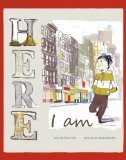

Mentor Text: Using Pictures to Read Closely: Read aloud Here I Am and discuss how the illustrator created pictures that draw the reader in. Since this is a wordless picture book, how does the author/illustrator convey feelings through pictures? Explicitly teach students how to use pictures/illustrations to help them gain meaning from a text. How does the author use color and symbols to convey meaning? Would adding words to the story change the meaning of the story? Here I Am is a great mentor text to scaffold close reading strategies for students. Pair it with other wordless picture books, Flora and the Flamingo by Molly Idle and Bluebird by Bob Staake when scaffolding close reading with students.
is a great mentor text to scaffold close reading strategies for students. Pair it with other wordless picture books, Flora and the Flamingo by Molly Idle and Bluebird by Bob Staake when scaffolding close reading with students.
©2013 by Dawn Little for Picture This! Teaching with Picture Books. All Amazon links are affiliate links and may result in my receiving a small commission. This is at no additional cost to you.
Filed under: Close Reading, Here I Am by Patti Kim, mentor texts, teaching with picture books Tagged: close reading, Here I Am by Patti Kim, mentor texts, scaffolding text

October 21, 2013
The Matchbox Diary by Paul Fleischman
Recommended Grades: 3-5
A little girl visiting her great-grandfather is encouraged to find something in his shop and he’ll tell her a story. She chooses a cigar box that turns out to hold a host of matchboxes. Inside each is a memento attached to a story. Through the mementos, the little girl learns about her great-grandfather’s youth in Italy and subsequent immigration to the United States.
Lesson Idea:


Mentor Text: Memoir Writing: Read aloud The Matchbox Diary and discuss the characteristics of memoir writing. This particular book is not an actual memoir, but is memoir-like. Use this as a model/mentor text for writing about objects that evoke memories. Pair this with The Keeping Quilt, Ma Dear’s Aprons
and discuss the characteristics of memoir writing. This particular book is not an actual memoir, but is memoir-like. Use this as a model/mentor text for writing about objects that evoke memories. Pair this with The Keeping Quilt, Ma Dear’s Aprons and Aunt Flossie’s Hats (and Crab Cakes Later)
and Aunt Flossie’s Hats (and Crab Cakes Later) . How do the authors use objects to write autobiographically?
. How do the authors use objects to write autobiographically?
©2013 by Dawn Little for Picture This! Teaching with Picture Books. All Amazon links are affiliate links and may result in my receiving a small commission. This is at no additional cost to you.
Filed under: memoir, mentor texts, teaching with picture books, The Matchbox Diary, writers workshop Tagged: memoir-esque, mentor texts, The Matchbox Diary, writers workshop

October 14, 2013
The Monstore by Tara Lazar
Recommended Grades: 3-5
The Monstore sells only the most useful monsters – perfect for all your monsterly needs. Zack has a monsterly need – to frighten his pesky little sister away. Does his plan work?
Lesson Idea:
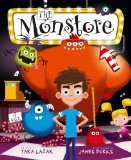

Word Choice/Voice: Read aloud The Monstore and discuss how the author used word choice to bring voice to the text. Consider: “Zack begged, whined, grumbled, and collapsed onto the cash register.” How did the author use synonyms to make the text more exciting and the language more descriptive? Use The Monstore
and discuss how the author used word choice to bring voice to the text. Consider: “Zack begged, whined, grumbled, and collapsed onto the cash register.” How did the author use synonyms to make the text more exciting and the language more descriptive? Use The Monstore as a mentor text for word choice when students are writing their own texts.
as a mentor text for word choice when students are writing their own texts.
©2013 by Dawn Little for Picture This! Teaching with Picture Books. All Amazon links are affiliate links and may result in my receiving a small commission. This is at no additional cost to you.
Filed under: six traits of writing, The Monstore by Tara Lazar, voice, word choice, writers workshop Tagged: The Monstore, voice, word choice, writers workshop

September 30, 2013
The Keeping Quilt by Patricia Polacco
Recommended Grades:3-5
An autobiographical account of a quilt that was passed down from generation to generation.
Lesson Idea:
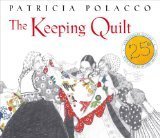

Mentor Text: Memoir Writing: Read aloud The Keeping Quilt and discuss the characteristics of memoir writing. Use this as a model/mentor text for writing about objects. Pair this with Ma Dear’s Aprons
and discuss the characteristics of memoir writing. Use this as a model/mentor text for writing about objects. Pair this with Ma Dear’s Aprons and Aunt Flossie’s Hats (and Crab Cakes Later)
and Aunt Flossie’s Hats (and Crab Cakes Later) . How do the authors use objects to write autobiographically?
. How do the authors use objects to write autobiographically?
©2013 by Dawn Little for Picture This! Teaching with Picture Books. All Amazon links are affiliate links and may result in my receiving a small commission. This is at no additional cost to you.
Filed under: memoir, mentor texts, teaching with picture books, The Keeping Quilt by Patricia Polacco Tagged: memoir mentor texts, memoir writing, The Keeping Quilt

September 9, 2013
Lincoln’s Gettysburg Address with designs by James Daugherty
Publisher: Albert Whitman and Company
Publication Date: February 1, 2013
Recommended Grades: 5-8
This is an interesting pictorial depiction of Lincoln’s Gettysburg Address by James Daugherty.
Lesson Idea:
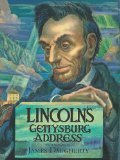

Close Reading: Use Lincoln’s Gettysburg Address in a study of speeches. Pair it with I Have a Dream by Dr. Martin Luther King, Jr. with paintings by Kadir Nelson. Use both books as scaffolds of close reading. Students can use the pictures to find clues to analyze and gain a deeper understanding of the text. Lincoln’s Gettysburg Address
in a study of speeches. Pair it with I Have a Dream by Dr. Martin Luther King, Jr. with paintings by Kadir Nelson. Use both books as scaffolds of close reading. Students can use the pictures to find clues to analyze and gain a deeper understanding of the text. Lincoln’s Gettysburg Address actually discusses each picture spread in the back of the book shedding more light on the clues found in the pictures.
actually discusses each picture spread in the back of the book shedding more light on the clues found in the pictures.
Disclosure: I received a copy of this book from the publisher for review.
©2013 by Dawn Little for Picture This! Teaching with Picture Books. All Amazon links are affiliate links and may result in my receiving a small commission. This is at no additional cost to you.Publisher: Albert Whitman and Company
Filed under: analyzing texts, Close Reading, Lincoln's Gettysburg Address, speeches Tagged: analyzing texts, close reading, Lincoln's Gettysburg Address, speeches

September 2, 2013
Clark the Shark by Bruce Hale
Publisher: Harper Collins
Publication Date: June 25, 2013
Recommended Grades: 3-5
Clark is a shark with zing, bang, and BOOM. Clark loves life, but when his enthusiasm is too much for his friends, his teacher helps him figure out a way to tone it down.
Lesson Idea:
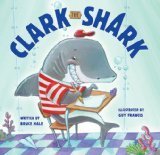

Building Community: Read aloud Clark the Shark and discuss how his enthusiasm affected others. Was Clark able to to tone it down? Brainstorm with students ways that they may affect others in the classroom. What are some strategies they could use to “tone it down”?
and discuss how his enthusiasm affected others. Was Clark able to to tone it down? Brainstorm with students ways that they may affect others in the classroom. What are some strategies they could use to “tone it down”?
Disclosure: I received a copy of this book from the publisher for review.
©2013 by Dawn Little for Picture This! Teaching with Picture Books. All Amazon links are affiliate links and may result in my receiving a small commission. This is at no additional cost to you.
Filed under: building community, Clark the Shark Tagged: building community, Clark the Shark


